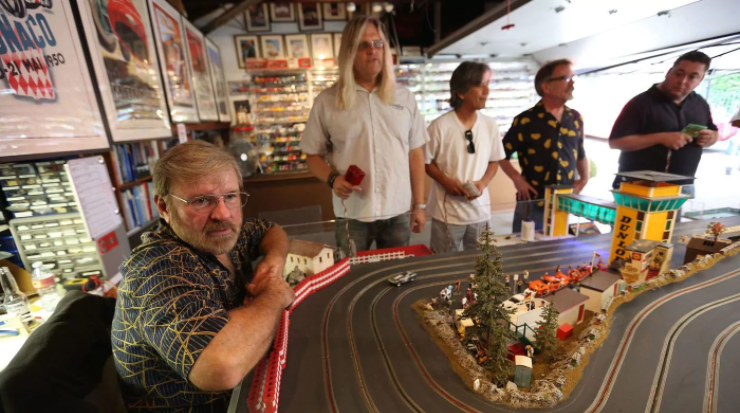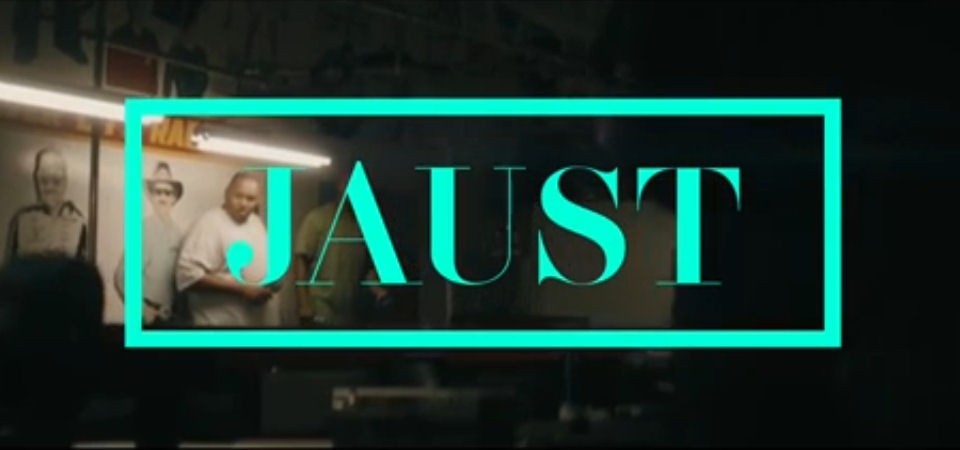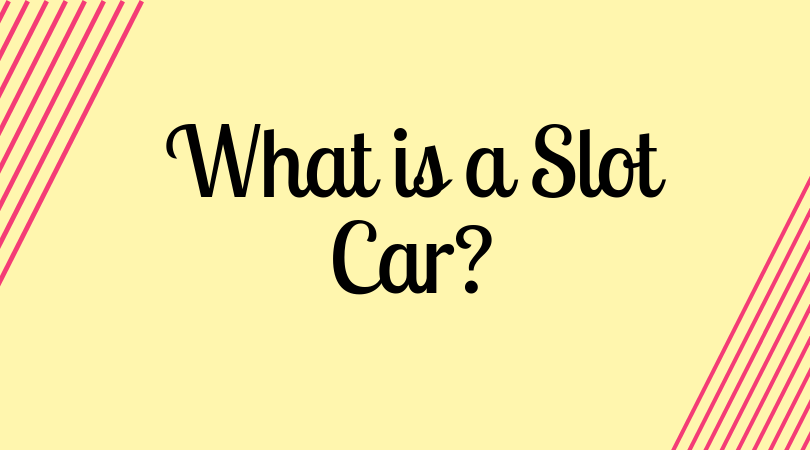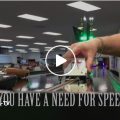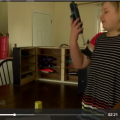When he was 14, Ed Shorer loved nothing as much as slot car racing.
All his free time and spare change were spent at the track, where he and his buddies, gripping hand-held electric controllers, raced their tiny cars whipping around curves and corners.
That was half a century ago. But on a hot August afternoon in Glendale, Shorer, now 66, was a boy again, reliving his adolescence.
The retired schoolteacher and about 30 other enthusiasts had gathered for an invitation-only slot car race in a friend’s garage — one of 11 private tracks owned by members of the select group.
Piloting cars built at 1/32nd the size of the vintage Grand Prix racers on which they are modeled, the graying racers ran laps for hours, earning points and bragging rights as they competed for top racing honors.
The action is faster, more intimate and more visceral, they say, than video game competition or RC racing.
“There’s nothing like experiencing the sights, sounds and smells of such a wide range of cars that you can race on a track and then hold in your hand,” Shorer said.
He and his cohort have driven a revival of interest in the once-popular hobby, which at points during the 1960s was called the most valuable niche of the massive U.S. toy market.
But it may be only a temporary resurgence. While the slot car scene in Europe is booming, most of the current American hobbyists are Shorer’s age or older. As they age out of the hobby, they are not being replaced by younger racers.
“The hobby in the U.S. is based entirely on nostalgia,” said motor sports historian and slot car aficionado Dennis David. “So, I see it dying.”
Slot car racing was born in the early 1900s, but the hobby languished until the 1950s, when English entrepreneurs began to build electrified tracks and controllable scale-model cars to race on them.
The new system spread to America. By the mid-’60s, there were more than 3,000 public race tracks in the U.S. Manufacturers Scalextric, Revell, Aurora, Carrera and Tyco were together selling $500 million worth of cars and equipment a year.
Kids like Shorer began frequenting tracks where, for only a few dollars, they could spend hours racing with their pals.
“I was ditching Hebrew school when I was 12 years old when I wandered into a hobby shop in West Covina,” Shorer said. “As a result, I never got my bar mitzvah.”
As the fad peaked and then waned, slot car businesses found themselves unable to turn a profit charging teenagers small amounts of money to use their large tracks.
“The multipliers didn’t work out,” said Stephen Farr-Jones, a lifelong racer and founder of the private FarrOut Slot Car Club. “There weren’t enough minutes in the day to sell.”
By the early 1970s, slot car centers — like the once-prevalent ice-skating rinks, bowling alleys, pool halls and miniature golf courses that also required a large real estate footprint — were folding. Fewer than 200 tracks were still in business by 1975, and gradually most of those closed, too.
Today, there are only two in Southern California: Orange County’s Buena Park Raceway and Santa Clarita’s Wright Slot Car Raceway. They and their customers say the client base is graying fast.
“I’ve got a regular base of guys 50 and older,” said Debby Watterson, who with husband Jim owns the Orange County facility, where hobbyists pay $7.50 to race their cars for a half-hour. “But the only problem is, see, that they keep dropping off.”
As public racetracks have gone out of business, and as the internet has made online shopping for slot cars and parts easier, slot car fans have formed clubs to support racers and host competitions.
The FarrOut club, based in Farr-Jones’ Glendale garage, is one of the area’s largest. On a recent Saturday afternoon, he and 30 club members were sipping beers between practice laps and getting ready to race.
“All my friends come over, and we drink and drive,” Farr-Jones said. “It’s like our second childhood.”
Though most fit the stereotype — older white men wearing shorts and sandals — the crowd was a mix of men and women, young and old, with several races and many occupations represented.
“If you have a slot car, you’re in,” said Tim Herrera, 56. “We’re just here because of our passion for racing.”
Read more: Slot car racing fad of the 1960s is popular again — with men in their 60s

